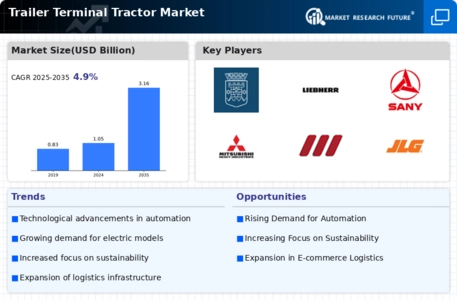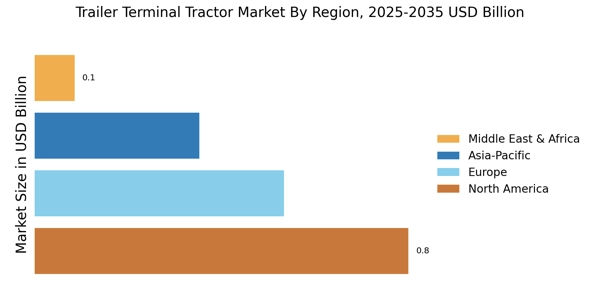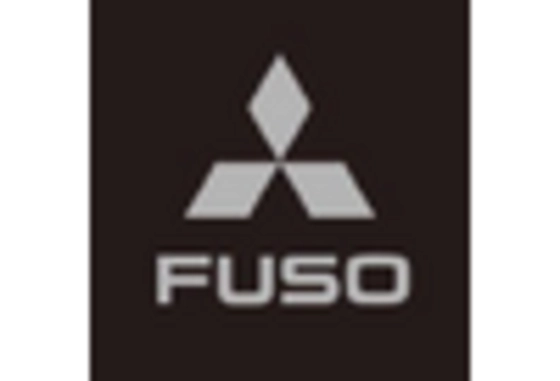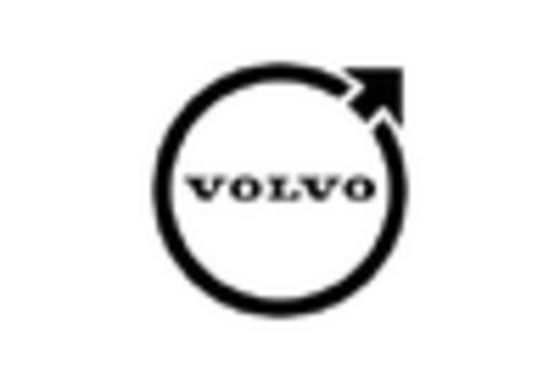Rising E-commerce Activities
The Trailer Terminal Tractor Market is significantly influenced by the rising activities in e-commerce. As online shopping continues to gain traction, the demand for efficient warehousing and distribution solutions has escalated. Terminal tractors are essential for managing the increased volume of goods that e-commerce generates, facilitating quick and effective movement of products within warehouses and distribution centers. The e-commerce sector is expected to expand at a rate of 14% annually, which in turn drives the need for more robust terminal tractor solutions. This trend indicates a shift in logistics strategies, where companies are increasingly relying on terminal tractors to streamline their operations and meet consumer expectations.
Expansion of Port and Terminal Infrastructure
The Trailer Terminal Tractor Market is benefiting from the expansion of port and terminal infrastructure across various regions. As global trade continues to grow, investments in port facilities and logistics hubs are on the rise. This expansion necessitates the use of terminal tractors to efficiently manage the increased flow of containers and goods. Recent reports indicate that port infrastructure investments are expected to reach over 100 billion dollars in the next decade, creating a favorable environment for terminal tractor manufacturers. The demand for terminal tractors is likely to increase in tandem with these infrastructure developments, as operators seek to enhance their operational capabilities and accommodate larger volumes of cargo.
Technological Advancements in Terminal Tractors
The Trailer Terminal Tractor Market is witnessing rapid technological advancements that enhance the performance and capabilities of terminal tractors. Innovations such as electric and hybrid models are becoming more prevalent, offering improved fuel efficiency and reduced emissions. Additionally, the integration of automation and telematics systems allows for better fleet management and operational efficiency. These advancements are likely to attract investments, as companies seek to modernize their fleets to remain competitive. The market for technologically advanced terminal tractors is projected to grow, with estimates suggesting a potential increase in market share by 20% over the next decade, driven by the demand for sustainable and efficient logistics solutions.
Increased Demand for Efficient Logistics Solutions
The Trailer Terminal Tractor Market is experiencing a surge in demand for efficient logistics solutions. As supply chains become increasingly complex, companies are seeking ways to optimize their operations. Terminal tractors play a crucial role in enhancing the efficiency of container handling and transportation within ports and distribution centers. According to recent data, the market for terminal tractors is projected to grow at a compound annual growth rate of approximately 5.2% over the next five years. This growth is driven by the need for faster turnaround times and reduced operational costs, prompting logistics providers to invest in advanced terminal tractors that can handle heavier loads and operate in tighter spaces.
Focus on Sustainability and Environmental Regulations
The Trailer Terminal Tractor Market is increasingly shaped by a focus on sustainability and adherence to environmental regulations. Governments and regulatory bodies are implementing stricter emissions standards, compelling manufacturers to develop cleaner and more efficient terminal tractors. This shift towards sustainability is not only a regulatory requirement but also a market demand, as consumers and businesses alike are becoming more environmentally conscious. The market for electric terminal tractors is expected to grow significantly, with projections indicating a potential increase of 30% in sales over the next five years. This trend reflects a broader commitment to reducing carbon footprints within the logistics sector.


















Leave a Comment